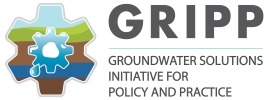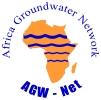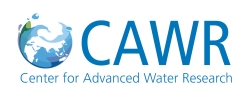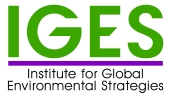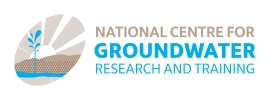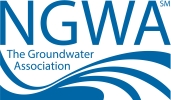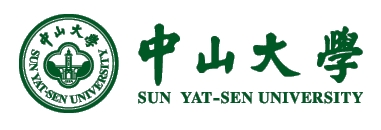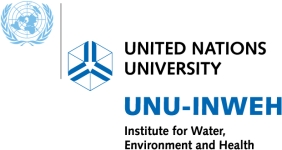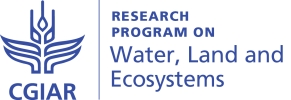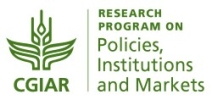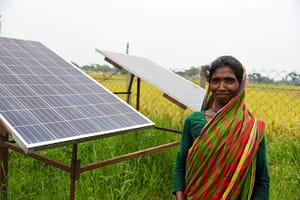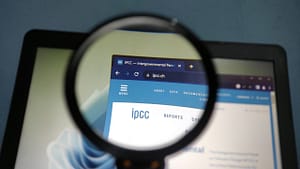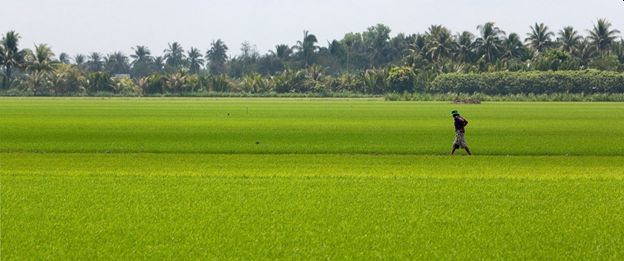
Rice fields in the Mekong Delta, near Can Tho, Vietnam. Groundwater irrigation in the region could affect resource availability and water quality across international borders (photo: J. Carl Ganter/Circle of Blue).
The Mekong River Basin is enormous, covering 790,000 km2. The traditional focus has been on surface water resources, with a legacy of international diplomacy around infrastructure development and finding best options to harvest and harness the critical ecosystem services and surface water resources for the six countries sharing the Mekong River (from the headwaters to the delta: China, Myanmar, Laos, Thailand, Cambodia and Vietnam).
Groundwater is increasingly developed at local scales for water supply, irrigation and other demands. However, little has been achieved in terms of building international cooperation around shared aquifers. This is gradually changing as the share of groundwater in overall water use increases, and impending issues of overexploitation and contamination are leading to the realization that transboundary and integrated water resources can be more effectively managed with concerted collaboration.
The area of the basin in most critical need of integrated and transboundary cooperation around shared groundwater resources is the Mekong Delta region. It is located in the south of the basin, and covers an area of 200,000 km2 with a population of around 20 million people.
With a view to addressing this need, a new five-year project has been initiated by the Food and Agriculture Organization of the United Nations (FAO) with funding from the Global Environment Facility (GEF) (USD 15 million). The objective of the project is to strengthen environmental sustainability and water security in the Lower Mekong Basin by focusing, for the first time, on improved governance and sustainable utilization of the Cambodia-Mekong River Delta Transboundary Aquifer. Key to this project, and building on previous national-level projects, is Cambodia and Vietnam coming together with a clear commitment to join efforts to address issues in the delta, which increasingly hinge on a better understanding and joint management of the underlying aquifer systems.
The groundwater resources in this transboundary aquifer system have considerable benefits for human livelihoods and socioeconomic development. Groundwater is critical for rice production, which makes a substantial contribution to the national gross domestic product (GDP) of Vietnam. Groundwater also supports the agriculture sector in Cambodia, which accounts for half of the country’s GDP and employs 80–85% of its labor force. For these reasons, the aquifer is heavily exploited for irrigation and water supply. The annual groundwater extraction rate throughout the transboundary aquifer is estimated to be 800–900 million cubic meters (Mm3)/year.
The Tonle Sap Lake (the largest lake in peninsular Indochina), the delta river system, and the near-coastal marine waters are all hydraulically interconnected and interact with groundwater, providing unique freshwater ecosystems, coastal aquifers and river estuaries vulnerable to saltwater intrusion, as well as water for croplands and intensively irrigated floodplains. Climate change is predicted to increase the global mean sea level by 20-30 cm by 2050, while current groundwater pumping is already exerting significant decreases in the ground surface level due to subsidence in the delta. This makes the megacities sink and increases risks of flooding and seawater intrusion into the aquifers. Arsenic in groundwater is an inherent problem for human health through contaminated water supply and affected irrigated crops, an issue potentially exacerbated by pumping and subsidence. Against these challenges, the project partners, involving relevant sectoral ministries, development partners and research institutions, will focus on developing a joint interdisciplinary understanding of the aquifers and groundwater resources. This will be done by carrying out a transboundary diagnostic analysis as well as a strategic action program with joint identification and piloting of priority projects.
Importantly, the project will seek to obtain the political commitment of the countries to implement the priority legal, institutional and policy reforms and investments at national level, as well as a permanent transboundary consultation and coordination mechanism at the bilateral level. These efforts are critical for the protection and equitable utilization of the shared delta aquifer system and its dependent ecosystems.






